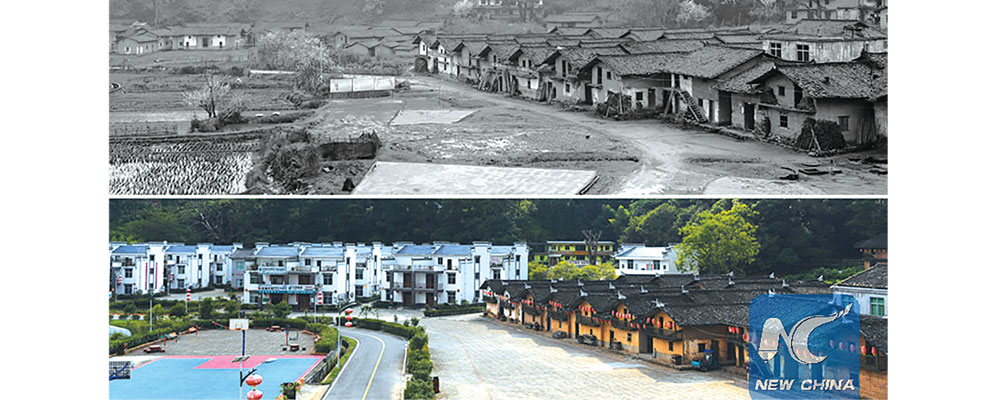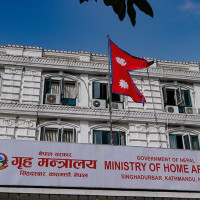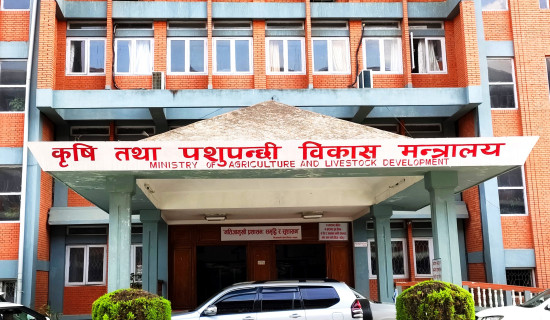- Wednesday, 7 January 2026
Incentivise Agriculture To Achieve Prosperity
In February 2021, China declared its decisive victory in eradicating extreme poverty despite unintended hindrances imposed by the COVID-19 pandemic. It lifted over 800 million people out of poverty in the last four decades, an achievement that is unprecedented in human history. This contributed to around three-quarters of the global reduction in the number of impoverished people. This miraculous success has inspired other poor and developing nations. The Chinese government adopted multifaceted strategies that included targeted policies, investment in infrastructure, full utilisation of human capital, export orientation, and the promotion of employment opportunities in rural and underdeveloped regions.
In China, agriculture came in first priority with progressive land reforms that resolved the centuries-old uneven distribution of land, with the peasants able to till their own land. State incentives, innovation, and supportive competition drastically helped raise the living standards of the poor farmers. The coastal areas first witnessed the economic boom with large-scale capital investment that contained both domestic savings and foreign direct investment. The rural workers migrated to the urban centres for jobs, while there were spillover effects in the interior parts, contributing to poverty alleviation and broad-based economic growth.
Common prosperity
The People’s Republic of China (PRC) had made a resolve to attain common prosperity since the establishment of the PRC in 1949. Seventy-two years after the Chinese people stood up, they succeeded in throwing out the fetters of abject penury once and for all. In 2021, the poverty rate at the national poverty line was 0 per cent from 7 per cent in 2014. It adopted a holistic strategy to address the root causes of poverty and empower individuals and communities, enabling them to eventually break free from the vicious cycle of scarcity and deprivation.
Dr. Upendra Gautam, general secretary of the China Study Centre Nepal, said that China had secured a comprehensive victory in the fight against poverty owing to the visionary leadership and hard work of the Chinese people. "There was no project of poverty alleviation in China. The whole nation was engaged in poverty alleviation by harnessing the comparatively advantageous sectors, including agriculture, tourism, herbals, and innovation," he said.
Between 1978 and 2017, China's economy expanded at an average rate of 9.5 per cent yearly, growing in size by almost 35 times. This led to a dramatic drop in the number of people living in poverty, from 770 million (80 per cent of the population) in 1978 to 100 million people (7 per cent of the population in 2014).
After President Xi Jinping assumed the leadership of the party, government, and military in 2014, China’s anti-poverty efforts gathered momentum. He made a historic mission to take 100 million people out of extreme poverty by 2021, the very year China celebrated the first centenary of the establishment of the Communist Party of China (CPC). The data showed that China invested USD 246 billion from 2012–2020 in the Targeted Poverty Alleviation Programme (TPA). During this period, China invested various types and levels of finance worth nearly 1.6 trillion yuan as special poverty alleviation funds. Between 2014 and 2021, President Xi frequently inspected poverty alleviation programmes in backward regions and areas to take stock of the situation.
Innovation in agriculture
Central to China's poverty alleviation efforts was the prioritisation of rural development. Agriculture, long considered the backbone of China's economy, received substantial investment and support. Recognising its potential, China has embarked on a journey of agricultural modernisation, leveraging technology and innovation to increase productivity and improve rural livelihoods.
The targeted poverty alleviation campaign and the development of rural infrastructure have played a pivotal role in transforming rural areas. Through the promotion of modern farming techniques, access to credit, and agricultural training programmes, farmers have been empowered to enhance their yields and diversify their produce, breaking the cycle of poverty in many regions. By empowering rural communities and increasing their productivity, China laid the foundation for sustainable growth and prosperity.

Infrastructure development is essential for enhancing agricultural productivity and facilitating access to markets. China launched ambitious infrastructure projects, such as the construction of irrigation systems, rural roads, and storage facilities, to improve the efficiency of agricultural production and reduce post-harvest losses. In addition to agricultural reforms, it implemented a range of social welfare programmes aimed at providing essential services to the most vulnerable segments of society. Access to education, healthcare, and social security was expanded, ensuring that every citizen had the opportunity to realise their potential and contribute to the nation's development. These initiatives not only improved living standards but also fostered social inclusion and unity.
Technological advancements revolutionised agriculture, enabling farmers to improve productivity, optimise resource use, and adapt to changing environmental conditions. China has been at the forefront of agricultural innovation, investing heavily in research and development to develop high-yielding crop varieties, precise farming techniques, and sustainable practices. By equipping farmers with knowledge and tools, technology empowers them to boost their livelihoods.
Smallholder farmers constituted a significant proportion of China's rural population and were disproportionately affected by poverty. Recognising their importance, the government implemented targeted policies and programmes to support smallholder farmers, including subsidies, credit facilities, and insurance schemes. These initiatives aimed to improve farmers' access to inputs, finance, and markets, enabling them to increase productivity and income levels.
"Poverty is not just a lack of income but also a deprivation of opportunities and resources. To address these multidimensional aspects of poverty, China has adopted a holistic approach that focuses on empowering rural communities," said Dr. Gautam.
The synergy between herbal medicine and tourism was particularly evident in poverty-stricken regions where both industries have flourished hand in hand. In areas blessed with abundant natural resources and medicinal plants, tourism has provided a vital economic lifeline, attracting investment, creating jobs, and improving living standards. China's success in poverty alleviation through the promotion of herbs and tourism serves as a testament to the transformative power of innovative thinking and strategic planning. By harnessing its rich cultural heritage and natural resources, China has not only improved the livelihoods of millions but has also preserved traditional knowledge and promoted sustainable development.
For instance, in the remote mountains of southwest China's Guizhou province, the scenic beauty and unique cultural heritage have drawn tourists from far and wide. At the same time, local communities have capitalised on the region's biodiversity to cultivate valuable medicinal herbs, transforming their fortunes in the process. Considering the potential of Traditional Chinese Medicine (TCM) in poverty alleviation, the Chinese government has actively promoted the cultivation and utilisation of medicinal herbs in impoverished regions. Farmers are encouraged to grow high-value medicinal plants, such as ginseng, astragalus, and goji berries, providing them with a lucrative alternative to traditional crops.
Holistic strategy
China's success in reducing poverty through agriculture, tourism, herbal industries, and innovation serves as a testament to the power of holistic development strategies. By addressing economic, social, and environmental challenges in an integrated manner, China has not only improved the lives of its citizens but also set an example for the world to follow. As other countries grapple with similar challenges, they can draw inspiration from China's experience and explore synergies between traditional practices, such as herbal medicine, and emerging industries like tourism. By embracing innovation and collaboration, nations can chart a path towards inclusive growth and prosperity for all. Like China, Nepal has huge potential in agriculture, herbs, and tourism, and it can eradicate poverty by boosting these sectors.
Gautam said that Nepal can eradicate poverty through the optimised use of comparative advantage sectors, including agriculture and tourism. "The leadership and the country should move ahead with the national campaign against poverty instead of running a project. So, the federal, provincial, and local levels should harness the potential that they have in their respective places and link production to the industries to achieve the goal of prosperity," he added.

Nepal still has 20.27 per cent of the population living below the poverty line. According to the Nepal Living Standards Survey IV 2022–23, the majority of poor people live in rural areas. The prevalence of poverty is 24.66 per cent in rural areas and 18.34 per cent in urban centres. In order to alleviate poverty, it is imperative for the government to focus on infrastructure development to promote agriculture, tourism, and herbs. About 62 per cent of the total households are still engaged in agriculture in Nepal. Similarly, contribution of agriculture to the GDP is still 24 per cent. By investing in the agro-sector, the living standards of the farmers can be improved. With modernisation and commercialisation of agriculture, Nepal will not only eradicate poverty but also contribute to an inclusive and sustainable economy.
Similarly, tourism is also another important sector to keep the economy afloat by bringing in foreign currencies. Nepal is rich in art, culture, music, historic monuments, heritage, and beautiful sites, which attract domestic and foreign tourists alike. It is now reviving following the crippling impact of the COVID-19 pandemic. Currently, around 110,000 tourists visit Nepal monthly. The government of Nepal has set a goal to bring in at least 1.6 million tourists in the next fiscal year.
Rich biodiversity
Nestled in the lap of the Himalayas, Nepal is not just renowned for its breath-taking natural landscapes but also for its rich biodiversity, invaluable herbs, and medicinal plants. The country has varied topography, ranging from the high Himalayas to green hills and dense jungles to the plains of the Tarai. Over 6,500 species of flowering plants are found here. For centuries, the traditional knowledge and practice of herbal medicines, which have been passed down through generations, have existed in the country. Nepali herbal plants offer natural remedies and are also popular in different countries. Tapped effectively, they serve as an important tool to generate jobs in the far-flung parts of the country and retain youths who are leaving for abroad in search of better opportunities.
Nepal and China are close friends and neighbours. It has been supporting Nepal in various fields such as economy, infrastructure, education, health, culture, trade, tourism, and connectivity. Nepal is a part of China’s multi-billion-dollar global project, the Belt and Road Initiative (BRI). China is sharing its successful poverty-eradication story with the rest of the world. As an immediate neighbour, Nepal should take its cue from China’s people-centric development strategy that it applied to revolutionise agriculture and achieve moderate prosperity in the villages.
Now it has accorded priority to revitalising the rural areas so that the people, who were lifted out of poverty, would not relapse into their previous condition. Given its strength and knowledge in farming, Nepal should give priority to agriculture by increasing investment and incentivising farmers to enhance production and productivity, thereby attaining self-reliance in agro-products. This is also necessary to catch up with other developing and developed nations.
(Kafle is a journalist at TRN.)













-(1)-original-thumb.jpg)



